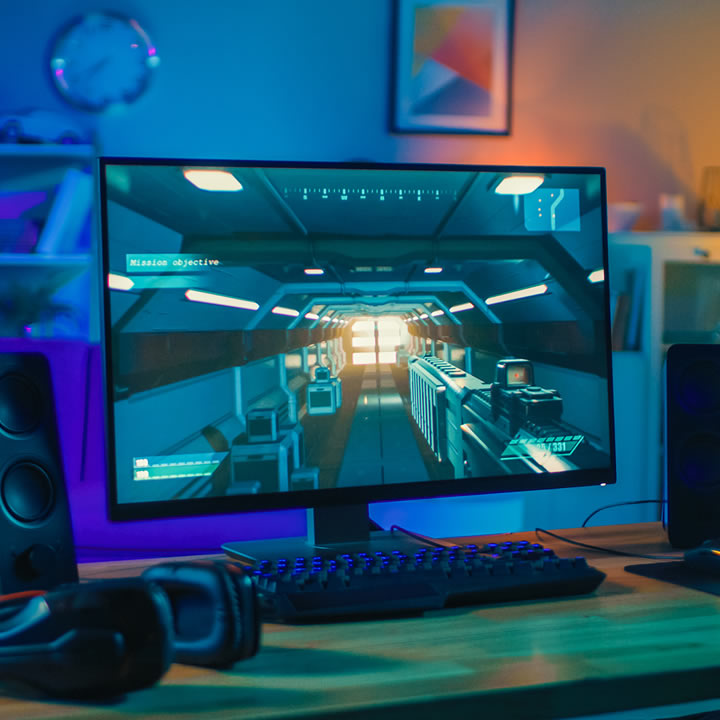You want to buy a new monitor for your PC, but you’re not sure what type of monitor is right for you. There are different types of best monitors available, which can make it difficult to decide. But don’t worry! We’ll cover the most common ones and give tips on how to find the perfect one for your needs.
What is a monitor and what does it do?
Technically, a monitor is an electronic device that displays images sent to it by another electronic device, like your computer.
But in the common vernacular, when someone says “monitor” they usually mean what we would call the display screen itself the part that you stare into for several hours every day.
The purpose of a monitor is to display images in a way that is easy to view and doesn’t cause eye strain.
Size, resolution, and panel type
Size: A monitor’s size represents the width of the screen in inches usually measured diagonally from one corner to another. This can range from 21 inches to 34 inches or even larger. The larger the screen, the more costly it is.
Resolution: Resolution is measured in pixels and determines how many pixels are on the display at one time. A high resolution is very desirable because text and images will look crisp and clear, but if you want to view multiple documents or windows at once, a lower resolution might be better. Currently, the most common resolution for desktops is 1920 x 1080.
Panel type: The three main types of panels are TN, VA, and IPS. The differences boil down to color reproduction (TN), black levels (VA), and viewing angles (IPS). All three will produce sharp images, but they each do it in slightly different ways.
TN panels offer the best price to performance ratio, but can sometimes produce colors that don’t look quite right for people who are picky about color accuracy.
VA panels overall have the best black levels and contrast, but at a little bit of a decreased price compared to IPS and TN panels. IPS provide very good color reproduction and their viewing angles are almost unmatched, but they tend to be more expensive than TN and VA panels.
What is the distinction between an LCD and a LED display?
LCD (Liquid Crystal Display) monitors use liquid crystals that light up when charged with electricity. The crystals then change position when different amounts of electricity are sent through them, which is what creates the images on the screen.
LED (Light-Emitting Diode) monitors use LEDs as their light source instead of a backlight. This allows for better brightness control and more efficient energy usage, but it does make them cost a little bit more than an LCD monitor with comparable features.
Refresh rate, response time, and input lag
Refresh rate: This is measured in hertz (Hz), which shows how many times per second the image on the screen can be changed. A higher refresh rate will provide a smoother image but don’t necessarily equate to better picture quality.
Refresh rates can vary from 50 Hz all the way up to 240 Hz. If you are a competitive gamer or if you use your computer for any kind of fast-paced action, a high refresh rate is a good thing to prioritize.
Response time: This represents how long it takes a pixel on the screen to change from one color to another. It is measured in milliseconds (ms).
A lower response time will produce less ghosting, which is when the screen hasn’t fully refreshed between one image and another, leading to a trail or blur behind fast-moving objects. Response time can vary widely depending on the monitor and its features.
Input lag: The input lag of a monitor represents how long it takes for you to see what you just did with your mouse or another input device after making that action. This is measured in milliseconds (ms). A lower input lag number will lead to you reacting more quickly than if the monitor had a higher input lag value.
Choosing the right size monitor comes down mostly to your preference, but it’s important to consider how much space you have available for your monitor. It’s also worth noting that a higher resolution will produce better picture quality, but it will eat up more of your computer’s precious processing power.
The price range for different types of monitors
A TN monitor with a 1080p display and a high-refresh rate might be available for as little as $150, while an IPS monitor with a 1440p resolution and a higher refresh rate could easily cost upwards of $300.
In general, you get what you pay for when it comes to monitors, so even though there are plenty of affordable options out there, you might have to sacrifice some specs to stay within your budget.

